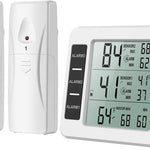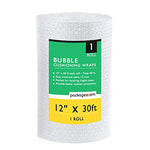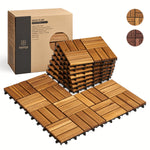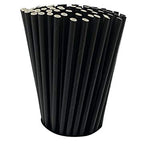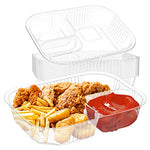You have no items in your shopping cart.
When it comes to food service, ensuring the safety and well-being of customers should always be a top priority. One critical aspect of food handling is wearing the correct gloves during the serving process. Correct gloves not only protect the food from potential contamination but also safeguard the customers from any harmful pathogens or allergens that may be present. In this comprehensive article, we will explore the various types of gloves available, the importance of choosing the right ones, and guidelines to follow for optimal food service safety.
Choosing the Right Gloves: A Matter of Safety
Food service establishments must be vigilant in their choice of gloves to ensure proper safety and compliance with health regulations. Let's delve into the different types of gloves available and their suitability for various food handling tasks:
1. Nitrile Gloves
Nitrile gloves have become a popular choice in the food service industry due to their excellent resistance to punctures and chemicals. These gloves are latex-free, making them suitable for individuals with latex allergies. Their high tactile sensitivity ensures dexterity during delicate food handling tasks.
2. Vinyl Gloves
Vinyl gloves are a cost-effective option for food service establishments, but they offer lower resistance to punctures compared to nitrile gloves. While they are suitable for light-duty tasks, they may not be ideal for heavy food preparation.
3. Latex Gloves
Latex gloves were once commonly used in food service; however, due to the increasing prevalence of latex allergies, their usage has declined. Individuals with latex allergies should avoid these gloves to prevent any allergic reactions.
4. Polyethylene Gloves
Polyethylene gloves are often used for short-duration tasks, such as sandwich preparation or serving ready-to-eat items. They are not suitable for high-temperature tasks as they have low heat resistance.
The Importance of Food Safety Regulations
Food safety regulations play a pivotal role in the food service industry. Adhering to these guidelines not only ensures the well-being of customers but also helps establishments maintain a positive reputation. Below are some key points to consider:
1. HACCP (Hazard Analysis Critical Control Point)
HACCP is a systematic preventive approach that addresses food safety. It identifies, evaluates, and controls potential hazards throughout the food handling process. Proper glove usage is essential to maintain critical control points in HACCP.
2. FDA (Food and Drug Administration) Regulations
The FDA has set specific regulations for food service establishments to follow. Compliance with these regulations is crucial to prevent foodborne illnesses and potential legal repercussions.
3. Proper Hand Hygiene
Using gloves doesn't replace the need for proper hand hygiene. Food handlers should always wash their hands thoroughly before donning gloves and after glove removal.
Best Practices for Glove Usage in Food Service
1. Change Gloves Regularly
Gloves should be changed regularly, especially after handling raw foods, touching the face or hair, and between different tasks. This practice prevents cross-contamination.
2. Single-Use Policy
Gloves should be single-use, meaning they should not be washed and reused. Using a fresh pair of gloves for each task ensures maximum safety.
3. Glove Removal Technique
Food handlers should be trained in the correct glove removal technique to avoid contaminating their hands while taking off the gloves.
4. Glove Storage
Gloves should be stored in a clean and dry area, away from potential contaminants. Dispensers can be used for easy access.
FAQs
Q: Can I use the same gloves for handling raw and cooked food?
No, it is essential to change gloves when switching from handling raw food to cooked food. This practice prevents cross-contamination and ensures food safety.
Q: Are vinyl gloves a good option for food service?
Vinyl gloves can be used for light-duty tasks in the food service industry. However, they may not offer the same level of puncture resistance as nitrile gloves.
Q: What should I do if a glove tears during food preparation?
If a glove tears, it must be immediately replaced with a fresh pair to avoid any potential contamination.
Q: Can I wear the same gloves all day if I wash my hands between tasks?
No, gloves should be changed regularly, even if handwashing is performed between tasks. Single-use policy ensures maximum safety.
Q: Are there any alternatives to gloves for food handling?
While gloves are the most common choice, utensils and tongs can also be used for some food handling tasks.
Q: Can reusable gloves be used in food service?
No, reusable gloves should be avoided in food service. Single-use gloves are essential for preventing cross-contamination.
Conclusion
Ensuring the use of correct gloves when serving food is a crucial aspect of food safety in any establishment. Nitrile gloves are often the preferred choice due to their puncture resistance and latex-free nature. Remember to change gloves regularly, adhere to food safety regulations, and practice proper hand hygiene. By following these guidelines, you can safeguard your customers' health and build a reputation for excellence in food service safety.


